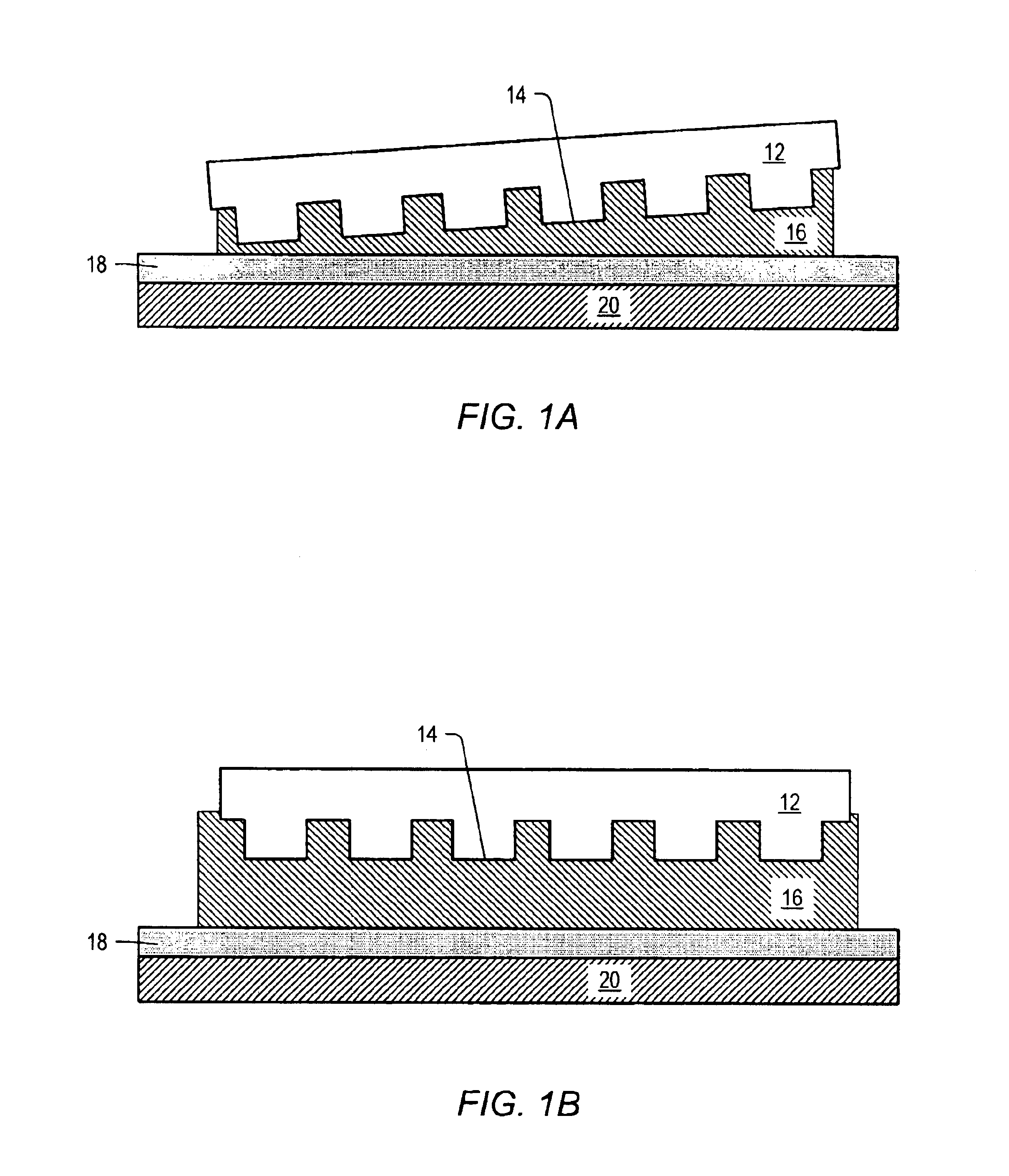Imprint lithography template comprising alignment marks
a technology of alignment marks and printing lithography, which is applied in the direction of printing, instruments, photomechanical equipment, etc., can solve the problems of more difficult to produce sub-100 nm structures, and achieve the effects of avoiding stiction, high viscosity friction, and avoiding stiction
- Summary
- Abstract
- Description
- Claims
- Application Information
AI Technical Summary
Benefits of technology
Problems solved by technology
Method used
Image
Examples
second embodiment
an X-Y translation stage is depicted in FIG. 17, and generally referenced by numeral 1700. To provide a similar range of motion to that of X-Y stage 1600, stage 1700 may have a foot print of about 29 inches by 29 inches and a height of about 15 inches (including a wafer chuck). Stages 1600 and 1700 differ mainly in that additional linkages 1701 are oriented vertically, thereby providing additional load bearing support for the translation stage.
Both X-Y stage 1600 and X-Y stage 1700 are flexure based systems. Flexures are widely used in precision machines since they may offer frictionless, particle-free and low maintenance operation. Flexures may also provide extremely high resolution. However, most flexure based systems may possess limited ranges of motion (e.g., sub mm range of motion). Embodiments disclosed herein may have a range of motion of more than 12 inches. It is believed that such stages may be cost-effective for lithographic applications, particularly in vacuum. Further, ...
PUM
| Property | Measurement | Unit |
|---|---|---|
| size | aaaaa | aaaaa |
| wavelength | aaaaa | aaaaa |
| viscosity | aaaaa | aaaaa |
Abstract
Description
Claims
Application Information
 Login to View More
Login to View More - R&D
- Intellectual Property
- Life Sciences
- Materials
- Tech Scout
- Unparalleled Data Quality
- Higher Quality Content
- 60% Fewer Hallucinations
Browse by: Latest US Patents, China's latest patents, Technical Efficacy Thesaurus, Application Domain, Technology Topic, Popular Technical Reports.
© 2025 PatSnap. All rights reserved.Legal|Privacy policy|Modern Slavery Act Transparency Statement|Sitemap|About US| Contact US: help@patsnap.com



